Brilliantly informative how we have now evolved into the final concepts of ”Me too”
It’s in the genes, condemn, punish, incarcerate it will not alter any transgression but continue into perpetuity. Until the bright lamp “ Our Sun “ has gone Super Nova.
We will finally extinguished with all our silly cultures and rules incinerated at last.
To star all over again in the next star formations, as part of the periodic table.
Sexual Diversity
Inuit woman, bisexuality and the Primus stove
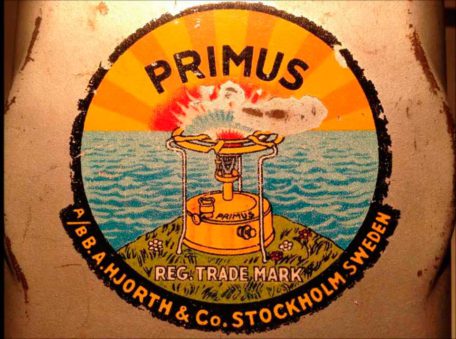
Photo of the Primus logo printed on an old stove. One stove that was very important to Inuit people.
The construction of sexuality.
The following article speaks about Moscas de Colores research initiated almost two years ago, following the publication of our Kalaallisut Gay and Lesbian Dictionary, name given to the language of the Inuit people of Greenland.
Starting up with the study of the collected words and the intention of understanding them, we were following the thread till we reached surprising and important conclusions that we want to share with you in our eagerness to show how natural is the human sexual diversity and its features.
Internet, Greenland LGBT group on Facebook and the exchange of emails with Francesc Bailon, Anthropologist specialized in the Inuit culture, are our sources, although it can not derive any statement or corroboration from them on the content of this article.
Inuit words
Following the work of collecting more than 500 “homosexual” slang words and expressions in 68 different languages, we could begin to establish relationships and classifications as well as its connection to the history of different societies. We realized that words give us information about the people who use them and the times in which they were originated.
In the case of Kalaallisut dictionary, the most important fact was the absence of insults, it only contained descriptive words like Arnaqatiminoortoq or “woman who likes women”. Were we facing a different culture? or Were there words that we had not found? Greenland’s own people confirmed that there were no insults and Francesc gave us the keys to understand what kind of culture was behind these words.
The Inuit people of Greenland

Map of the Earth on the North Pole. The Inuit inhabit the Arctic from Alaska to Siberia.
In 1977 was held in Alaska the first Circumpolar Conference of Arctic people including about 150,000 people in 19 groups of the same ethnicity. Among other things, they decided to call themselves Inuit, which means humans, rejecting the western term Eskimo, which they have never used to define themselves as well as others we should stop using.
The things we are going to tell are about a part of them, the people of Greenland, the largest island in the world, who came from Alaska about 650 years ago, with a current population of 60,000 people.
Climate adaptation
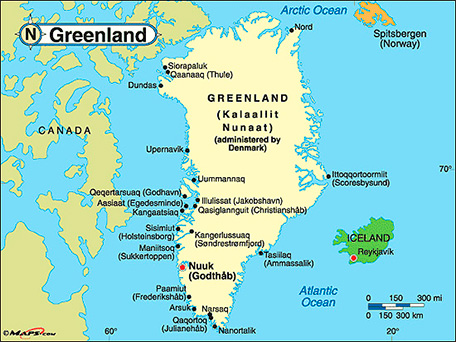
Kalaallit Nunaat or Greenland, the largest island on the planet. The Inuit of Greenland arrived on the island 650 years ago.
Living in the Arctic, with an extreme and deadly climate, in cultures dating back 4500 years, requires adaptability to the environment, and this characterizes personal relationships and society. In a big place like Greenland, with a low population density, communities are very small and with little leisure infrastructure.
They are hospitable people who share what they have, and whose priority is to group harmony versus what we mean justice. It is significant the system for resolving conflicts, except murder, that was performed by sung duels. As if it were a battle of hip hop, the winner was the most ingenious or who got his opponent angry and lost the temper with burlesque songs. In such an extreme environment, the practical sense and social cohesion are as important as food and shelter.
The Inuit woman, responsible for the fire

Soapstone lamp or Qulleq, always on, it was the Inuit woman’s responsibility until the arrival of the Primus stove.
This practical sense was also revealed in the sexual division of labor. The woman was responsible for the fire in the family and the man for hunting and fishing. So much so that if the husband went hunting and spent a night away from home, his wife accompanied him to handle the fire. If the wife was pregnant and could not go hunting, was another woman who accompanied the hunter to handle the fire. The relationship between Inuit women and the fire was such that when she died was buried with her qulleq, a lamp made of a stone called steatite that was always on fire, with seal blubber as fuel and dried moss as wick.

Traditional house of the Inuit. The typical Inuit house in Greenland is not the Igloo, but a stone hut, peat, and skin.
Inuit Sexuality
Furthermore, survival of any species passes through genetic exchange, and Inuit people of Greenland solved the limited genetic exchange, derived from the low population density and reduced traffic of travelers, by polygamy and a vision and attitude towards sex, natural and openly that here we would call promiscuity, reaching partner swapping in some areas of the island. In this sense, when it was another woman who accompanied the hunter, if so established, they could have sex.
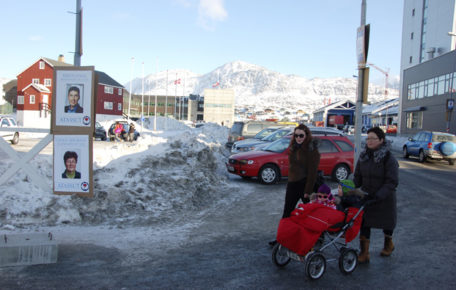
Nuuk today with election posters. Nuuk, the capital of Greenland, modern as well as traditional as the Inuit people.
In Greenland there is no prostitution with a few exceptions in Nuuk, the capital, because there is no market for what is available to everyone.
It is well known and revealing that when an explorer was hosted by a family, as well as food and shelter, he was often offered to have sex with the wife, probably not only as a demonstration of hospitality but also as a strategy to incorporate genetic variety to the community.
Even in northern Greenland, the most uninhabited area, foreign donors are sought for fertilization, and that is always involved with sex. Inuit women are mothers from 16 years old on, and this is no a family or social drama at all: they also have often several children before marriage, and they get married usually not with biological fathers who remain bound to the progeny.

Inuit family.
Sexuality as adaptive factor
In summary, we can see that extreme weather formed some small communities with little infrastructure for entertainment. This characterized the social relationships and ultimately, a culture, in which sex is not taboo and it is practiced with different people, thus manifesting, in addition to the reproductive function, its social relationship function, that strengthens and unites the community as happens in other species, and where the separation between sex and love is quite clear.
Our model would not survive in the Arctic.
The arrival of the West to Greenland.
Although the Vikings colonized the island around the year 1000 and had contact with the Dorset Culture, previous inhabitants of the island, it was not until the sixteenth century when the first contacts between the West and the Inuit people of Greenland took place. With the aim of opening new trade routes, they started the legendary expeditions and technological and cultural exchange.
Over the years the status of Greenland changed from Danish colony to province, later to autonomy with important self-government, up to today, on the threshold of independence. In addition to the Catholic religion, abuses, diseases, alcoholism, and uprooting, there was also technological exchange. Parka, anorak, and kayak were technological exports from the Inuit people to the west, and the kerosene stove or Primus with its fire control constituted a technological import of major importance to the Inuit culture.
A greater ability to control fire, the basic element for subsistence, affected the sexual division of labor, so women began to be alone at home while their husbands went off hunting, equipped with effective Primus stove.
Inuit women, the Primus and bisexuality.

Inuit women today. Many Inuit women are bisexual and do partner exchanges.
Men expeditions to hunt and fish could last several days and therefore women began to spend much time alone. This new situation propitiated the opportunity for lesbian sex so that currently one of the highlights of the Inuit sexuality is that many women are bisexual, fact which is shown off and with which the husbands are delighted, especially if women let them watch or participate, to the point of being accepted and socially integrated and talking about it normally.
In a way, we could say that technological innovation of Primus has built, relatively speaking, identitarian bisexuality in Inuit women. While it is true that in existing records about Inuit culture there are few references to homosexual behavior, it seems that this Inuit women bisexuality is a relatively recent phenomenon.
The plasticity of human sexuality.
Starting from a society where sex was just another social relationship, where polygamy and promiscuity were high, where infrastructure for entertainment was limited, and where cohesion, harmony, and sharing were key elements for the subsistence, the incorporation of the Primus stove produced a change or adaptation in sexuality.
A process of this type, in our opinion, can only be explained by a plastic, fluid, malleable sexuality, which as such, is neither predetermined nor immutable, and whose construction process can last a lifetime, without implying that can be changed at will, since this constructive process depends on infinite of interrelated variables.

Plasticine and sexual plasticity. In sexuality as in plasticine all leaves a mark.
The battered history of human sexuality began thousands of years ago, and we have no doubt that our homosexual and heterosexual behavior, transgender, intersex, etc, existed from the beginning, as they also have existed and exist in the rest of nature (some evolutionary strength will give).
From a certain moment, what was normal and integrated became a vice, a vice became a sin, sin became a crime, crime became a disease and this became finally a right. Throughout this historical process and especially in the last 150 years, there has been no stop looking for the causes of all these “deviations” respect to what was considered as normal, natural, correct, etc. This search has not achieved success because you can not find causes of homosexual behavior at other sites than the causes of heterosexual behavior, because they are generated in the same way and for the same system. There have been always sought differences but never similarities.
Inuit sexuality sheds light on human sexuality

Inuit Women. Nothing changed in the biology of Inuit women to become bisexual.
Inuit women did not suffer a genetic or biological change, nor substance or toxin affected them, nor childhood trauma. Inuit women were simpled adapted to the changes because they could, because they wanted to and because, somehow, it was convenient to do so. There was no difference between women before and after, and however, with the passage of time, there was a change in the orientation and sexual identity. This change, difficult to explain by the usual approaches, could really be explained with the focus on plastic sexuality, which additionally would explain what happened in Greenland, and could probably shed some light on what actually happens with this very intimate, controversial and important issue as the human sexuality is.
Inuit men sexuality
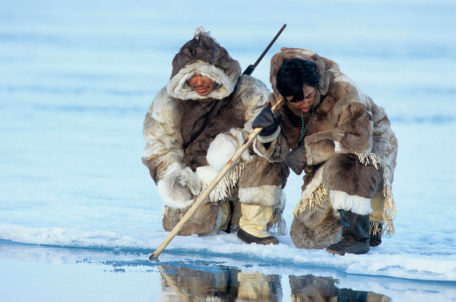
Inuit men hunting. Before, the woman always accompanied her husband when he went hunting. After Primus men went hunting alone.
It remains to know whether these facts also produced a change in the sexuality of men, immersed in the same society and going alone the same amount of time that their partners spend alone, issue that will hopefully provide some information in the future.
The Inuit culture, much more than information.
For us, the Inuit culture has also meant a change, because it has allowed us to see how it could be a society in which sexual diversity goes from being a right to be a normality, and especially because it teaches us that we can live differently.
As we got to know more details about the Inuit people, we have realized that we have a contemporary and modern culture, like ours in many respects, and more admirable in many others. Its attitude towards sexuality, the lack of insults, its language, which obliges to express the degree of certainty of what is said, and the importance of harmony over justice, their hospitality and their ability to share, make the Inuit Culture a reference to look at, to learn from and a need to care for.
Agreements: - To Tina E., Hans B. J. y Ikuala N. C., from Greenland, for they help :) - To Mª Ángeles R. B. for his help and for his encouragement. - To the great Francesc Bailon, for his help and his kindness. We leave these links so you can learn more about their work and their expeditions. http://culturainuit.wordpress.com/ http://www.antropologiainuit.com/ https://www.facebook.com/pages/Francesc-Bailón-Antropología-Inuit/Tag :Bisexuality, Sexual Diversity, Sexual Plasticity And leave us a comment
Leave a Reply
-
Hi Nicolas!
We regret to inform you that our star, the sun, does not have enough mass to explode in a supernova. What does happen within 4000 -5000 million years is that the Sun will become a red giant that will burn our planet.
We understand from your message that you suggest the futility of the struggle to make people happier, given the future of our planet. But don’t you think that is too much time to justify that it’s not worth trying to improve things?
And even more, do you think that will be the end of humanity? Do you think it is impossible for us to leave this beautiful planet? Don’t you think that the humanity of the future will be more egalitarian and respect people’s sexual freedom?
Thank you very much for your comment, but please, next time try to be not so off-topic.
Regards




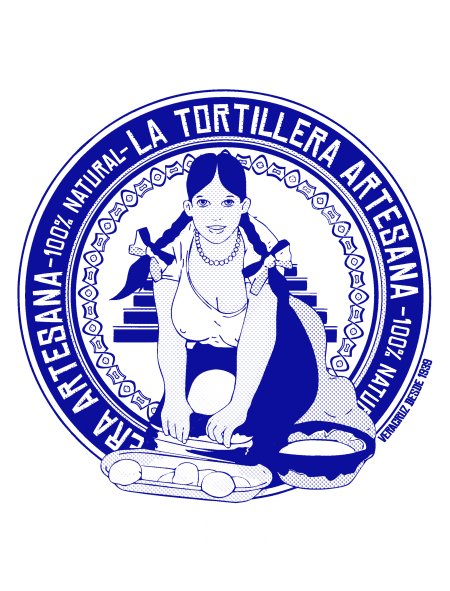


Something to say?
Tell us what you think of this article. If it’s good or bad, if you think we are idiots, or if you see us in hell. Even if you are a few words person, you can do something to improve people’s lives, helping us to spread it.
Share it in your networks!